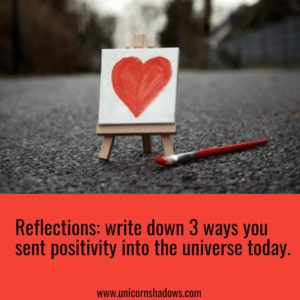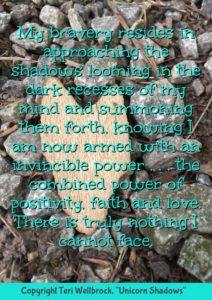By definition:
Anticipatory anxiety is where a person experiences increased levels of anxiety by thinking about an event or situation in the future. Rather than being a specific disorder in its own right, anticipatory anxiety is a symptom commonly found in a number of anxiety related conditions, such as generalized anxiety. Anticipatory Anxiety can be extremely draining for people as it can last for months prior to an event. The worries people experience specifically focus on what they think might happen, often with catastrophic predictions about an event. The nature of negative predictions about the event will be the difference between an anxiety level that is incapacitating or merely uncomfortable.
as defined by Anxiety UK
A friend recently reached out to me prior to her drive from Cincinnati to Chicago to inquire about mindfulness practices. As she spoke, she talked about her fears of traveling alone, the possibility of heavy traffic, not knowing where she was going once she arrived in Chicago, and the known fact that she would be driving over bridges. All of which were causing her to experience heightened anxiety. I love it that she reached out to me, trauma-warrior research guru that I am, to discuss options.
I advised her to begin practicing mindfulness as that is my favorite go-to when experiencing anticipatory anxiety. I just happen to be working through my own bout with that pesky little symptom of my C-PTSD right now. We are preparing for a trip to Denver to visit my oldest son. While I am super pumped to see his cute face and the beauty of Colorado, I am also fretting flying, the high elevations, and being far from home.
I am well aware of these fears and why they are present, after my four year stint in EMDR therapy, so I honor their presence and just notice them without judgment. I remind myself these are physiological responses triggered by chemical surges in my brain in relation to past traumatic events. I am working at re-wiring my brain and creating new neural pathways, but that is still a work in process.
Think: brain pep talks! Do what scares you, Teri. You got this, girl!
My personal anticipatory anxiety goes something like this:
Lying in bed. Thinking about staying at The Grand Hyatt in downtown Denver with its rooftop pool and tennis courts. Then my knees start to sweat. Rooftop pool? How does that water not crack the roof and cause the building to crumble? Is there a guardrail? How high is it? Will I be able to ride the elevator up there? Will I feel it swaying? I swear, if that kid of ours goes near the edge, my heart will stop. I wonder how the drive is from the airport? I’m hoping we aren’t in heavy traffic. Especially on a busy highway. I’ll have to sit in the back. You should check out the city and enjoy it, Teri. No. What if you have a panic attack. You haven’t had one of those in a long time.
That all transpires in a mater of seconds. Ah, the joys of racing thoughts. But, then I reach into my coping skills tool box and start to pull out my calming strategies and redirect my thinking.
Deep breath. Closing my eyes slowly, I savor that breath. Now another. A smile creeps into the corners of my mouth. Another breath follows, even deeper. I reach over and grab a grounding stone lying bedside. I love this stone. It’s cool to the touch. And heavy in my hand. So smooth. Other than that rough little edge where it dropped into the gravel on a hike once. I wonder sometimes how long it might take for me to rub it smooth again. My fingers engage in their rhythmic dance along that edge.I’m excited to walk the one block trek from our hotel to the 16th Street Mall. I’ll let John pick a fun restaurant since he’s now a Denver pro. My sweet boy. The best hugger ever. Looking forward to that hug. If something triggers some anxiety, I’ll just hold onto his arm. He knows how to help his momma stay grounded. So blessed to have these children in my life. This trip is going to be amazing. I am going to savor every one of my senses. The sights of the city and atop the mountains in Estes Park. The tastes of new eateries. I wonder how crisp the air will be without Cincinnati humidity? I look forward to breathing it in, smelling The Rocky Mountain flora. We will definitely need to rent a boat on the lake so I can feel the cool water mist splashing onto my face. Oh, to hear the laughter of my children as they catch up with one another after months apart.
My anticipatory anxiety is now silenced. Perhaps it will poke its annoying head out of hiding again. But, I know how to put it in its place.
Back to my friend who was traveling to Chicago.
She called me today as she drove back home to Cincy. I was happy to hear her voice sounding perky. When I asked about her trip, she replied, “Oh, Teri, it was wonderful!” Yay! I then inquired about the six hour drive. She spent the next thirty-one minutes telling me about the strategies she used throughout her trip. How she brought along one of her stuffed otters someone had gifted her from the Cincinnati Zoo, having stuffed the little guy into a pocket of her purse, and reaching for him to touch the softness as she approached a sky-way bridge into the city. She discussed the pep talks she gave herself, You’re fine. You’re doing great. Just stay focused on your lane. The songs she sang along with and the phone calls she made in order to pass the time and keep her mind re-directed from anxious thoughts.
Her friend lives on the fortieth floor of a high-rise condo overlooking Navy Pier so her fear of heights was another anticipatory anxiety. She explained how the elevator ride was smooth and quick and her friend kept the shades shut in the bedroom in order to allow her to settle in. She took stunning photos of the scenery from forty floors above the city streets, but avoided stepping onto the balcony. Honoring her needs. I love that.
She also challenged herself to new adventures, such as an architecture tour of the city from a boat cruising along the Chicago River. Her friend praised her for how well she was doing throughout their escapades. She even watched the fireworks display through the windows of her friend’s condo upon returning from their day of tours and sight-seeing. She told me she continued to use mindfulness techniques to shake off her anxieties and enjoy the present moment. Again, I love this!
Mindfulness as defined by me: reminding myself to re-direct any old habitual scary thought patterns back to this moment, right here, right now, and all the joyous beauty to be found in it by use of my senses. I open myself up to all things smile-inducing in this moment in time.
So, how do you stop anticipatory anxiety? Practice mindfulness. As often as possible. Soon you will be living mindfully aware. And anticipatory anxiety may try to sneak in a word or two, but you can mindfully remind it to sit down and shut up. You have a beautiful life to enjoy without its input.























